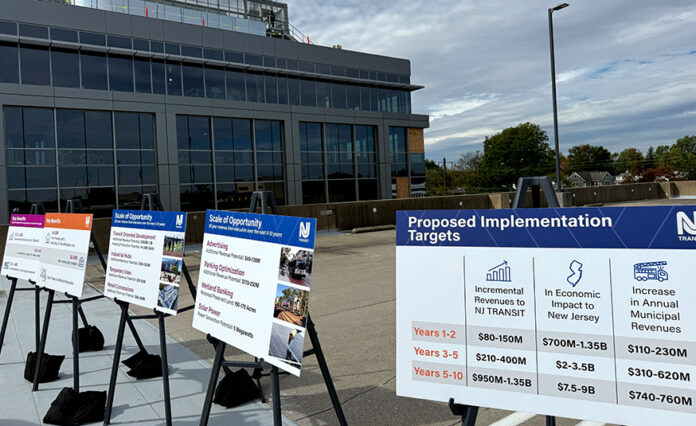New Jersey commuters and residents are looking at a future of major changes as NJ Transit unveils its comprehensive LAND Plan—Leveraging Assets for Non-farebox Dollars—a 30-year real estate strategy designed to unlock the full potential of its 8,000-acre property portfolio. This bold initiative aims to generate significant new revenue, spur housing development, and create thousands of jobs across the state while maximizing the value of land near transit hubs.
At its core, the LAND Plan focuses on generating non-fare revenue to supplement NJ Transit’s operating budget without increasing ticket prices. The agency projects the strategy could bring in up to $1.9 billion over the next three decades through land leases, sales, and expanded retail concessions. By tapping into these revenue streams, NJ Transit hopes to reinvest in its infrastructure and improve service reliability for the millions of commuters who rely on the system each day.
A centerpiece of the plan is the development of housing near transit stations, creating walkable, mixed-use communities that integrate residential, retail, and recreational spaces. NJ Transit estimates the project could add as many as 20,000 new housing units, including affordable housing, in towns across the state. By linking housing development with public transportation access, the plan aims to reduce congestion, enhance local mobility, and encourage sustainable urban growth.
The economic benefits extend far beyond real estate. Officials estimate the LAND Plan could create up to 50,000 jobs statewide and generate $14 billion in overall economic impact, including as much as $1.6 billion in additional municipal revenue for the towns hosting these developments. The approach positions NJ Transit as not just a transportation provider but also a key driver of statewide economic growth and community revitalization.
The types of projects envisioned under the LAND Plan are diverse and tailored to New Jersey’s varied landscape. Transit-oriented development (TOD) will create vibrant, walkable communities near train and bus stations, blending residential units with retail and commercial spaces. Large parcels of land may be developed into industrial hubs for warehousing and logistics, leveraging easy access to highways and transportation corridors. Temporary uses such as event spaces, filming locations, and pop-up businesses could activate unused properties while generating short-term revenue. Additionally, NJ Transit plans to expand retail concessions in stations and facilities, providing amenities for passengers while boosting income streams. Even solar power installations are being considered as a way to generate sustainable energy and additional revenue.
Officials emphasize that the LAND Plan is a collaborative roadmap, not a mandate, requiring coordination with municipalities, private developers, and state legislators. Public input and local partnerships will play a crucial role in ensuring that each development aligns with community priorities while meeting NJ Transit’s long-term financial goals.
The launch of this ambitious plan represents a new chapter for transportation and development in New Jersey, creating opportunities for smarter growth, enhanced public services, and stronger local economies. For residents and visitors interested in learning more about how these developments could reshape the Garden State, visit https://explorenewjersey.org/travel-planning/ to explore NJ Transit projects and other ways to engage with New Jersey’s evolving communities.
By combining strategic real estate use with economic development and transit-oriented design, the LAND Plan positions NJ Transit at the forefront of innovative public infrastructure planning, promising a future where transit hubs become thriving centers of housing, business, and opportunity across New Jersey.











